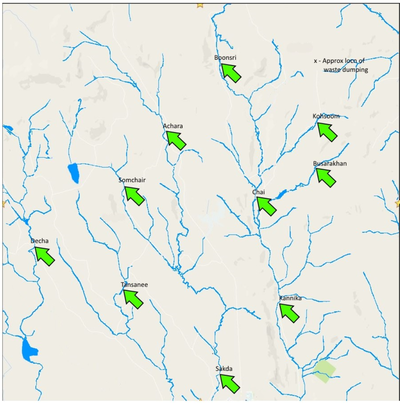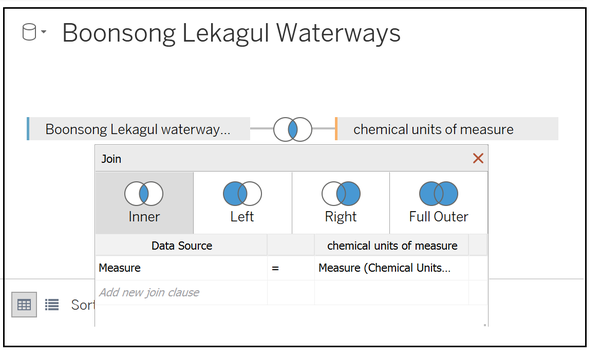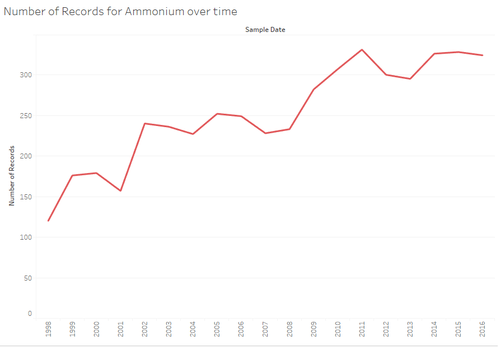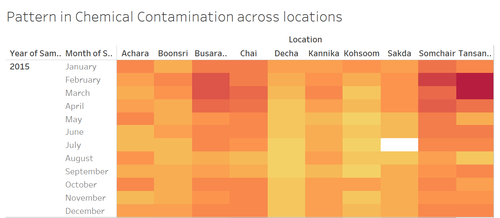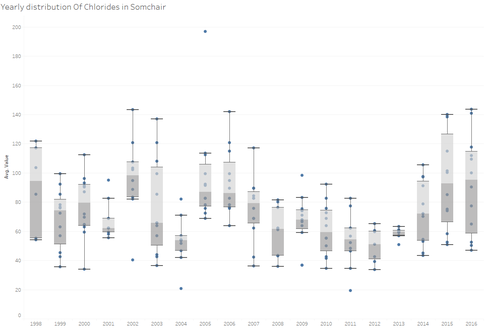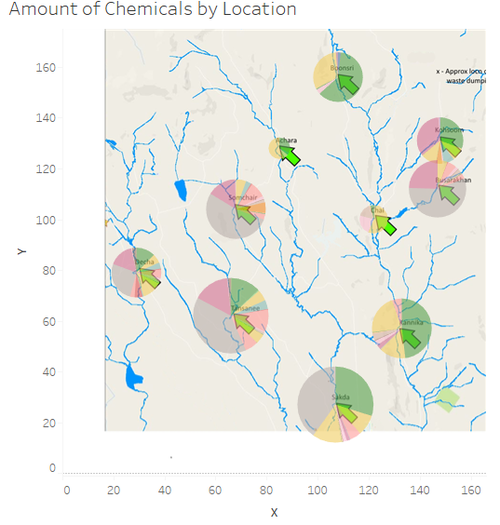Difference between revisions of "ISSS608 2016-17 T3 Assign GAURAV MIGLANI DataPrep"
Gauravm.2017 (talk | contribs) |
Gauravm.2017 (talk | contribs) |
||
| (15 intermediate revisions by the same user not shown) | |||
| Line 15: | Line 15: | ||
| style="font-family:Century Gothic; font-size:100%; solid #1B338F; background:#0b3d53; text-align:center;" width="25%" | | | style="font-family:Century Gothic; font-size:100%; solid #1B338F; background:#0b3d53; text-align:center;" width="25%" | | ||
; | ; | ||
| − | [[ISSS608_2016-17_T3_Assign_GAURAV MIGLANI_Visualizations| <font color="#FFFFFF"> | + | [[ISSS608_2016-17_T3_Assign_GAURAV MIGLANI_Visualizations| <font color="#FFFFFF">Insights & Conclusion</font>]] |
; | ; | ||
| Line 49: | Line 49: | ||
|} | |} | ||
</p> | </p> | ||
| − | |||
<br><b>Waterways Map</b><br/> | <br><b>Waterways Map</b><br/> | ||
<p>The map indicates the approximate location of the dumping site along with different location where water contamination might have occurred by Kasios due to release of some toxic chemicals.</p> | <p>The map indicates the approximate location of the dumping site along with different location where water contamination might have occurred by Kasios due to release of some toxic chemicals.</p> | ||
| − | [[Image: | + | [[Image:Figmap.png|400px]] |
== Geospatial Data== | == Geospatial Data== | ||
<p>We prepared the Geo-spatial data by creating two additional columns in the dataset that was provided to us for the VAST Challenge. The columns created represents the coordinates of each of the location that can be plotted on a 200x200 grid. The flow chart below shows the data preparation and methodology used for preparing geospatial visualisation.</p> | <p>We prepared the Geo-spatial data by creating two additional columns in the dataset that was provided to us for the VAST Challenge. The columns created represents the coordinates of each of the location that can be plotted on a 200x200 grid. The flow chart below shows the data preparation and methodology used for preparing geospatial visualisation.</p> | ||
| − | [[Image:Flow.png| | + | [[Image:Flow.png|1000px|Left]] |
| + | |||
| + | == Joining the Datasets== | ||
| + | <p>After the creating the coordinates column, it was necessary to join the two datasets so that it can be used in Tableau for visualisation. </p> | ||
| + | [[Image:Joining.png|900px]] | ||
| + | <p>The two datasets were imported in tableau and the inner join was performed to have one complete dataset for investigation. The inner join was done on measure variable as shown: -</p> | ||
| + | [[Image:Joining2.png|600px|Left]] | ||
| + | |||
| + | ==Methodology and Visualisations== | ||
| + | <table> | ||
| + | <table border='1'> | ||
| + | <tr> | ||
| + | <th>Description</th> | ||
| + | <th>Illustration</th> | ||
| + | </tr> | ||
| + | <tr> | ||
| + | <td><b> 1. Line Graphs showing the change over time </b> | ||
| + | <br>The line graphs have been used to visualise how the reading for different chemicals have been taken over time. We are measuring the number of records taken over time. The chemicals are divided into certain groups based on the number of reading taken .Through line graph we are able to unfold the past and the most recent situation with respect to the chemical contamination in the Boonsong Lekagul waterways. | ||
| + | Also, we have filtered out some the chemicals which have not shown a significant change over time across all locations.Morover,there are chemicals which are not present for a long period of time have also been filtered out. | ||
| + | </td> | ||
| + | <td>[[File:Line1.png|500px|center]]</td> | ||
| + | </tr> | ||
| + | |||
| + | <tr> | ||
| + | <td><b> 2.Heat Map showing the irregularity in Sampling. </b> | ||
| + | <br>For a more rigid analysis,i have created heat maps to analyse how different chemicals show a certain pattern in the values. In order to investigate if there has been any dumping and increase in chemical contamination. It also reflects that the recording for almost all the chemicals do not follow any pattern and have sparse values. | ||
| + | </td> | ||
| + | <td>[[File:Heat1.png|500px|center]]</td> | ||
| + | </tr> | ||
| + | |||
| + | <tr> | ||
| + | <td><b> 3.Anomolies using Box Plot </b> | ||
| + | <br> We observed that there are few anamolies in the dataset provided to us which revolve particularly around the location Tansanee,Decha,Sakda and Kannika.I have tried to unfold the abnormal behaviour by showing the change with the help of a Box-Plot. | ||
| + | |||
| + | </td> | ||
| + | <td>[[File:BoxPlot.png|500px|center]]</td> | ||
| + | </tr> | ||
| + | |||
| + | <tr> | ||
| + | <td><b> 4.Waterways Map</b> | ||
| + | <br>The Map provided is all about the Location which might have been contaminated by release of chemicals by Kasios. The map reflects the amount of chemical that is dominant in a particular location in year 2015-2016. | ||
| + | <br>The chemicals are reflected by the pie charts. Here, I have only shown the chemicals that are present in large amount in each of the locations. | ||
| + | </td> | ||
| + | <td> | ||
| + | [[File:Maps.png|500px|center]] | ||
| + | </tr> | ||
| + | |||
| + | |||
| + | </table> | ||
Latest revision as of 21:38, 8 July 2018
|
|
|
|
Contents
Tools and Techniques Used
1. JMP
2. Tableau
3. Microsoft Excel
Dataset and Description
There are two datasets provided to us by VAST Challenge. The first dataset gives us the information about the locations and the readings taken over time in that location. The second dataset gives us information regarding the units of each of the measure recorded. The 5 important variables in the raw dataset have been summarized in the table below:
| Variable Name | Description |
|---|---|
| Id | Identification number for the record |
| Value | Measured value for the chemical or property in this record |
| Location | Name of the location sample was taken from. |
| Sample Date | Date sample was taken from the location |
| Measure | Chemicals (e.g., Sodium) or water properties (e.g., Water temperature) measured in the record |
Waterways Map
The map indicates the approximate location of the dumping site along with different location where water contamination might have occurred by Kasios due to release of some toxic chemicals.
Geospatial Data
We prepared the Geo-spatial data by creating two additional columns in the dataset that was provided to us for the VAST Challenge. The columns created represents the coordinates of each of the location that can be plotted on a 200x200 grid. The flow chart below shows the data preparation and methodology used for preparing geospatial visualisation.
Joining the Datasets
After the creating the coordinates column, it was necessary to join the two datasets so that it can be used in Tableau for visualisation.
The two datasets were imported in tableau and the inner join was performed to have one complete dataset for investigation. The inner join was done on measure variable as shown: -
Methodology and Visualisations
| Description | Illustration |
|---|---|
| 1. Line Graphs showing the change over time
|
|
| 2.Heat Map showing the irregularity in Sampling.
|
|
| 3.Anomolies using Box Plot
|
|
| 4.Waterways Map
|

